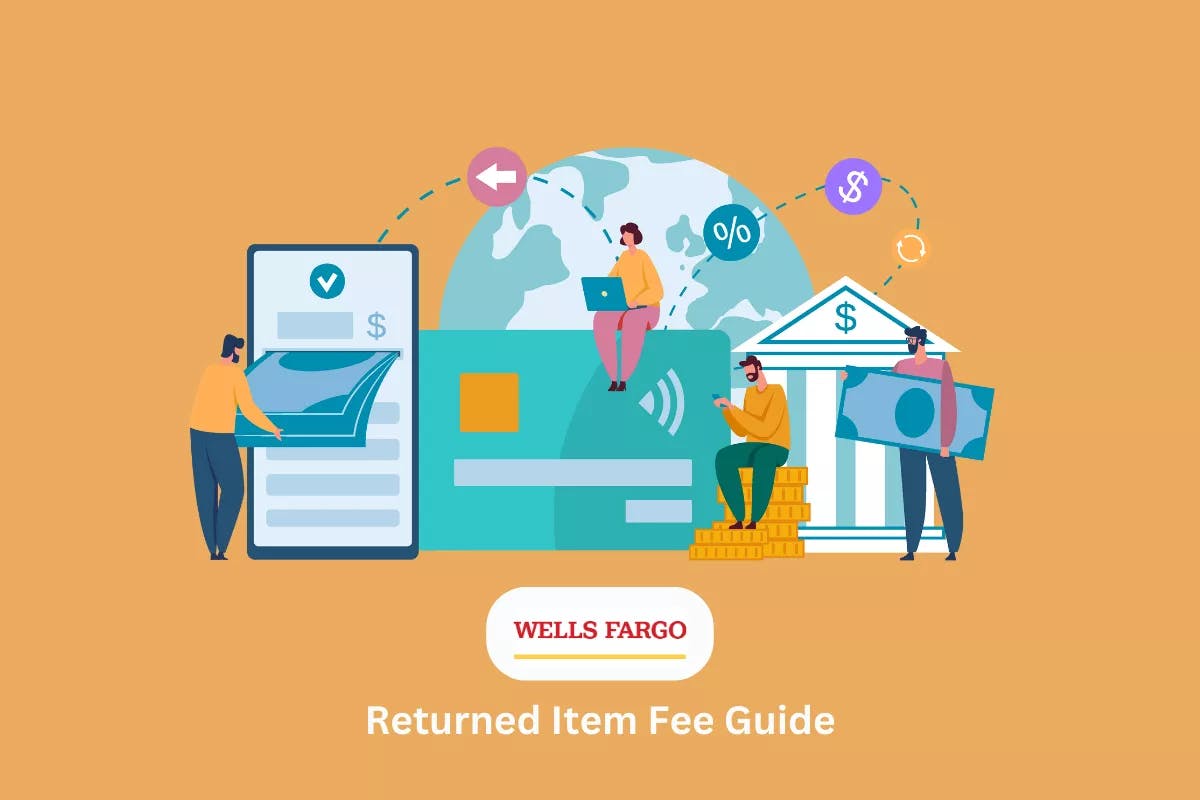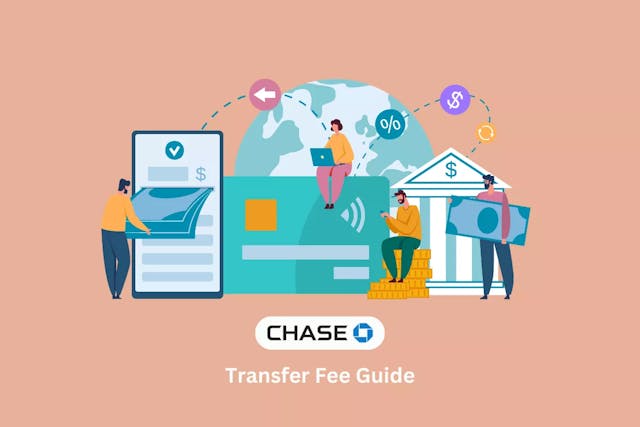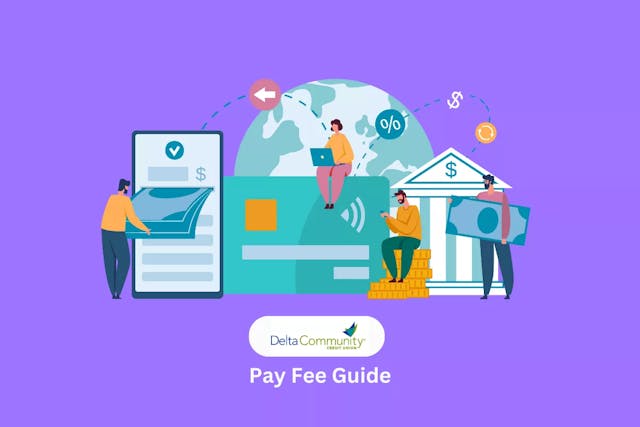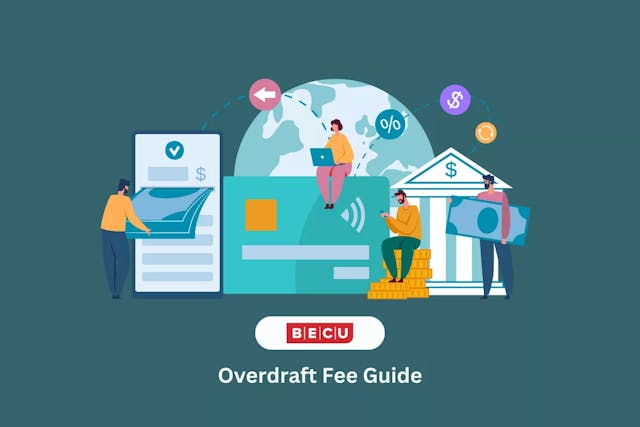What Is a Returned Item Fee?
Wells Fargo Bank issues you a returned item fee when you don’t have enough money in your account to complete a transaction. Unlike an overdraft fee, where the bank will pay for the transaction anyway, the bank will decline the transaction and issue you a returned item fee — also called a non-sufficient funds (NSF) fee or insufficient funds fee.
At Wells Fargo, returned item fees apply automatically to most types of transactions, including:
- Checks or other transactions made using your checking account number
- Recurring debit card transactions (e.g. gym memberships, streaming service subscriptions)
- ACH transactions
- Online or automatic bill payments (e.g. auto-pay utility bills, credit card payments)
If you conduct an ATM or everyday, non-recurring debit card transaction (gas, groceries, etc.) and don’t have enough money in your account to complete the purchase, Wells Fargo will simply decline the transaction and will not charge you a fee. In order for Wells Fargo to cover these types of transactions, you must first opt into the Debit Card Overdraft Service.
Difference Between Overdraft Fees and Returned Item Fees
Overdrafts and returned items are quite similar and easily confused.
An overdraft occurs when you don’t have enough money in your account to cover a transaction. Many financial institutions will automatically allow you to overdraw your checking account on certain transactions, such as checks, recurring debit transactions, ACH transactions, and online or automatic bill payments. However, in order to overdraft on ATM transactions or non-recurring debit purchases, you typically have to be opted into Chase’s Debit Card Overdraft Service. When your bank approves a transaction that overdraws your checking account by loaning you the funds, they will charge you an overdraft fee.
Much like an overdraft fee, you’ll receive a returned item fee — or non-sufficient funds (NSF) fee — if you don’t have enough money in your account to cover a purchase, withdrawal, or transfer. The difference with returned item fees is that the bank can choose to decline the purchase and charge you for having insufficient funds rather than picking up the bill. This can occur if you haven’t opted into overdraft protection, have exceeded your overdraft protection limit, or if the bank decides to decline the transaction for any other reason.
How Much Does a Returned Item Fee Cost at Wells Fargo?
Wells Fargo charges $35 per returned item fee for most account types, and $15 per returned item fee for Wells Fargo Teen Checking accounts.
The fee only applies to transactions that cause you to overdraw your checking account by more than $5. For example, if you make a purchase and your account only falls to -$4.50, you can expect to not incur a returned item fee.
Related Fees
If you overdraft your checking account, a number of scenarios could occur.
- Returned item fee
- Overdraft fee
- Overdraft protection fee
Returned item fee
A returned item fee occurs when you make a purchase but there are not enough funds in your checking account to cover checks; recurring debit card transactions; ACH transactions; or online or automatic bill payments. Instead of covering for you, the bank will decline the transaction, or return the item unpaid, and charge you a returned item fee.
Overdraft fee
Overdraft fees most often occur when you are not opted into overdraft protection and the bank allows you to overdraft your account on checks; recurring debit card transactions; ACH transactions; or online or automatic bill payments. Wells Fargo charges $35 overdraft fees for each transaction that causes you to overdraft your account by more than $5.
Overdraft protection fee
Overdraft protection fees most often occur when you are opted into the Debit Card Overdraft Service and the bank allows you to overdraw your account on checks; recurring debit card transactions; ACH transactions; online or automatic bill payments; everyday, non-recurring debit transactions; or ATM withdrawals.
Rather than a $35 overdraft fee, Wells Fargo will charge a $12.50 overdraft protection transfer fee if you are opted into the program. To enable Debit Card Overdraft Service, you can link up to two qualified accounts so that the bank can transfer funds from one account to another in the event of an overdraft. Qualified accounts for overdraft protection include:
- Savings account or secondary checking account
- Line of credit
- Credit card
Special Considerations
Wells Fargo limits the number of overdraft fees — including both overdraft fees and returned item fees — that you can receive each day depending on whether you have consumer accounts, teen checking accounts, or business accounts:
- Three (3) for consumer accounts
- Two (2) for Wells Fargo Teen Checking
- Eight (8) for business accounts per day
Additionally, you will not receive a returned item fee from Wells Fargo if both your ending daily checking account balance and available balance are overdrawn by $5 or less after the bank has processed all of your transactions on that day.
If you opt into overdraft protection, you’ll have peace of mind knowing that many of your transactions can be covered by the bank even if you don’t have enough money in your account; however, there are several things you should consider before opting in.
Overdraft protection is not mandatory. In fact, your bank is required to ask whether or not you want to opt in. When opening an account in person, this usually means that the representative will run through a long list of questions so they can get to know you better as a customer and customize your bank account to accommodate your needs. The overdraft protection transfer question is usually lumped into this list of questions, so it can be easy to opt in without thinking about whether it actually makes sense for you and your financial situation. Do your research before opting in.
According to the Consumer Financial Protection Bureau, opted-in accounts typically pay more on overdraft fees and other bank fees than accounts that aren’t opted in. Unfortunately, your bank could still charge you non-sufficient funds (NSF) fees even if you are opted into overdraft protection. You might get stuck with an NSF fee if you opted into overdraft protection but don’t have enough funds in your linked account to cover the transaction.
Remember: You can opt into or out of overdraft protection, or add a linked account, at any time.
Learn more about what you should know before opting into overdraft protection.
How to Avoid a Returned Item Fee
Overdraft fees and returned item fees are some of the most common charges detected on Cushion customers’ accounts, but there are small actions that you can take to avoid them at Wells Fargo:
- Keep an eye on your account balance and charges.
- Sign up for low-balance notifications.
- Don’t opt into overdraft protection.
- Opt into overdraft protection, but choose the right plan, such as a linked savings account, checking account, credit card, or line of credit.
Learn more about how to avoid a returned item fee.
How to Get a Returned Item Fee Refund
Sometimes, overdraft fees and returned item fees are inevitable. Luckily, if you get hit with one, that doesn’t have to be the end of it. You can try to negotiate a Wells Fargo returned item fee, but there are a couple of things that you should remember to increase your chances of success.
Prepare your information
Name, address, bank account number, the fees that you’d like to negotiate, and possibly your social security number.
Introduce yourself
“Hello. My name is , and I recently received a returned item fee while using my card. I’m contacting you to see if you would be willing to refund this fee.”
Have your points of leverage ready
Have you been financially affected by COVID-19? Are you a loyal Wells Fargo customer who has banked with the institution for an extended period of time? Do you have multiple accounts with the bank? Do you make regular deposits? Is this returned item a rare occurrence?
Be patient, persistent, and prepared not to get a refund every time.
A little kindness goes a long way. Remember: The representative that you’re speaking with on the phone likely didn’t write the rules on refunds. But also, don’t hesitate to press the issue if you initially hear “no”—that’s what your points of leverage are for. Sometimes, success depends on the representative that you speak with, so try calling back a few days later to speak with someone new. Finally, you have to be willing to lose some negotiations. Try not to get discouraged, but do try to take the necessary steps to avoid having to pay overdrafts in the future.
Do Returned Item Fees Hurt Your Credit Score?
Overdraft fees and returned item fees do not necessarily hurt your credit score on their own. Your score is calculated using the information in your credit report, which is a compilation of all of the debts and credit accounts in your name. A credit account is any account that involves a financial institution or creditor lending you money.
A checking account is a place for you to store your own money and not money borrowed from a creditor. Therefore, the information in your standard checking and savings accounts will not appear on your credit report and affect your score.
However, you should remember that if you overdraw your checking account and leave it in poor standing for a considerable amount of time, financial institutions have the right to close your account and send it to collections. Unfortunately, collections accounts do appear on your credit report and significantly impact your credit score.
If you do overdraw your checking account due to non-sufficient funds and receive an NSF fee, it’s important that you bring your account balance positive as quickly as possible or contact your financial institution to learn more about your options so as to avoid serious financial damage.
A decrease in your score could result in difficulty securing loans and credit cards, as well as loss of access to certain banking services and products. By losing access to banking services, you may have difficulty opening a standard savings account or checking account, or you may have to settle for accounts that come with a higher minimum balance and more fees.



